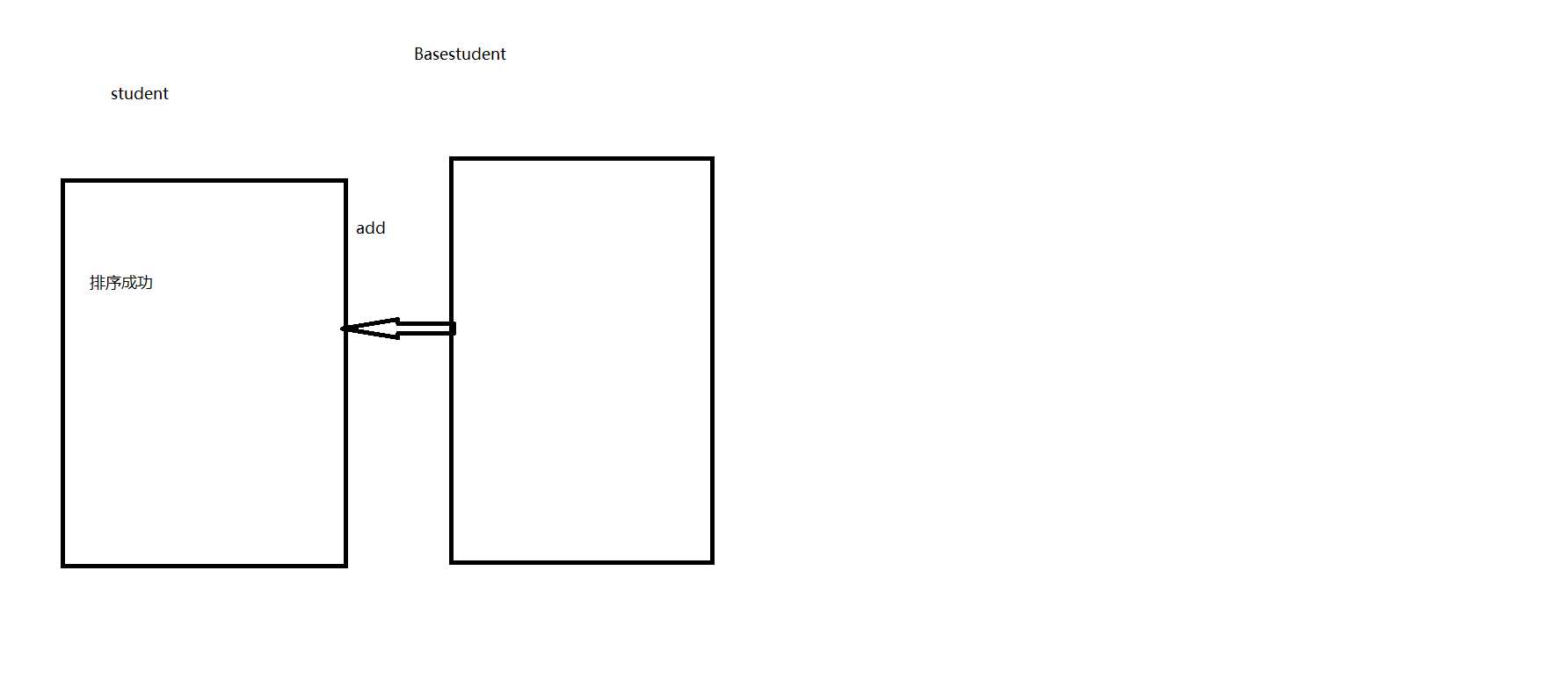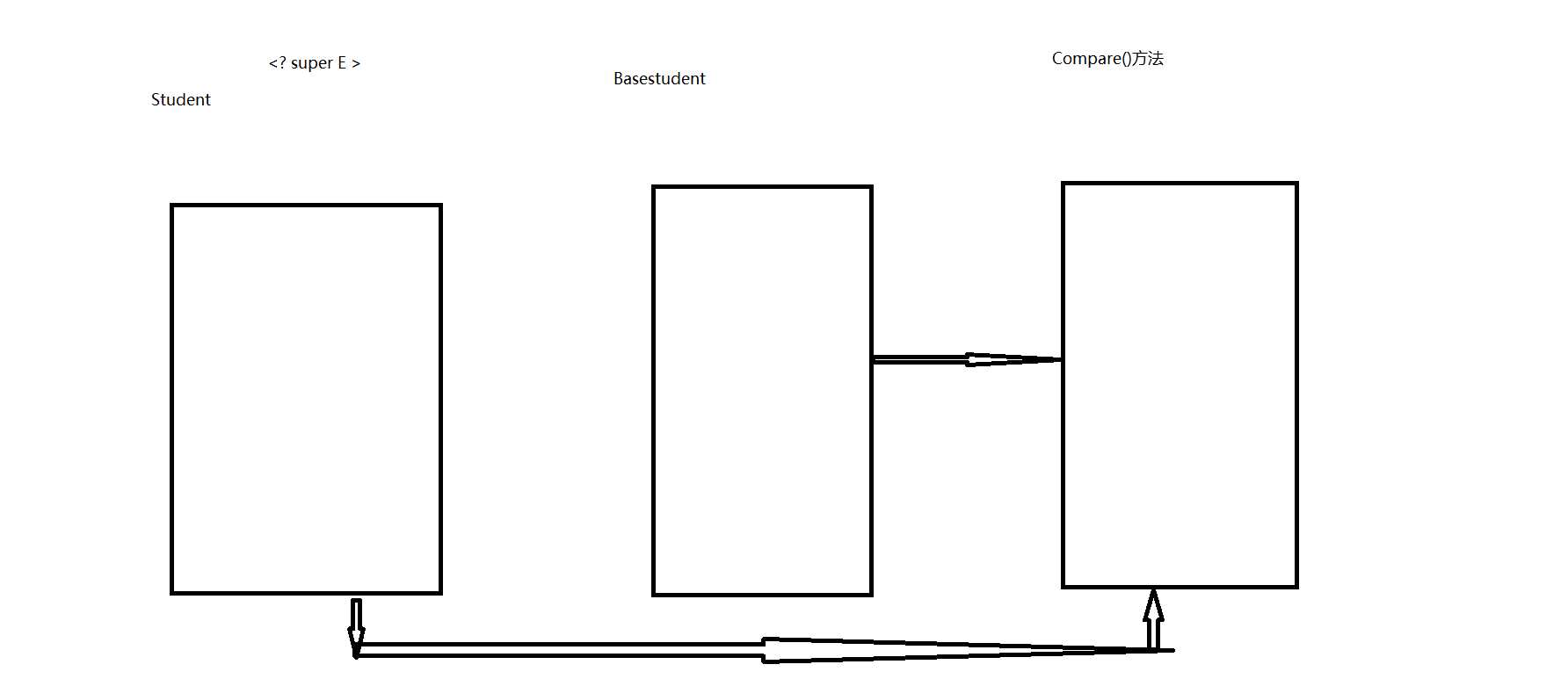标签:work ret show com stat ase compare 接收 setname
三、泛型概述和基本使用
* A:泛型概述
* 泛型的由来:通过Object转型问题引入
* 早期的Object类型可以接收任意的对象类型,但是在实际的使用中,会有类型转换的问题。也就存在这隐患,所以Java提供了泛型来解决这个安全问题。
1 /*Person类 父类*/
2 public class Person {
3 private String name;
4 private int age;
5 public Person() {
6 super();
7
8 }
9 public Person(String name, int age) {
10 super();
11 this.name = name;
12 this.age = age;
13 }
14 public String getName() {
15 return name;
16 }
17 public void setName(String name) {
18 this.name = name;
19 }
20 public int getAge() {
21 return age;
22 }
23 public void setAge(int age) {
24 this.age = age;
25 }
26
27 }
28
29 /*Student 类继承Person类*/
30 public class Student extends Person {
31
32 public Student() {
33 }
34
35 public Student(String name, int age) {
36 super(name, age);
37
38 }
39
40 }
41 /*Tool class*/
42
43 public class Tool {
44 private Object q;
45
46 public Object getObj() {
47 return q;
48 }
49
50 public void setObj( ) {
51 this.q = q;
52 }
53
54
55 }
56
57 /*Work class extends Person*/
58 public class Worker extends Person {
59
60 public Worker() {
61 }
62
63 public Worker(String name, int age) {
64 super(name, age);
65
66 }
67
68 }
69
70
71 /*invoke class*/
72 public static void demo1() {
73 Tool t = new Tool (); //创建工具类对象
74 t.setObj(new Student("张三",23));
75
76 //Worker w = (Worker) t.getObj(); //向下转型,但是
77 //Object是超类无法转型
78 //System.out.println(w);
79 }
80
81 /**
82 上方会报错,因为传入是Student类型但是接受的是Work类型,导致类型不一致
83 解决办法是用泛型指定Tool是Student类,这样就可以实现强转
84 */
解决方法:
public static void demo1() { Tool<Student> t = new Tool<>(); //创建工具类对象 t.setObj(new Student("张三",23)); //Worker w = (Worker) t.getObj(); //向下转型 //System.out.println(w); } /* improve Tool class*/ public class Tool<Q> { private Q q; public Q getObj() { return q; } public void setObj(Q q) { this.q = q; } }
扫盲点:

public class Tool<Q> { private Q q; public Q getObj() { return q; } public void setObj(Q q) { this.q = q; } public<T> void show(T t) { //方法泛型最好与类的泛型一致 System.out.println(t); //如果不一致,需要在方法上声明该泛型 } public static<W> void print(W w) { //静态方法必须声明自己的泛型 System.out.println(w); }
在接口中实现泛型

interface Inter<T> { public void show(T t); } /*class Demo implements Inter<String> { //推荐用这种 @Override public void show(String t) { System.out.println(t); } }*/ class Demo<T> implements Inter<T> { //没有必要在实现接口的时候给自己类加泛型 @Override public void show(T t) { System.out.println(t); } }
泛型中高级通配符的运用
/**
* * A:泛型通配符<?>
* 任意类型,如果没有明确,那么就是Object以及任意的Java类了
* B:? extends E
* 向下限定,E及其子类
* C:? super E
* 向上限定,E及其父类
*/
B:

1 public static void main(String[] args) { 2 //List<?> list = new ArrayList<Integer>(); //当右边的泛型是不确定时,左边可以指定为? 3 ArrayList<Person> list1 = new ArrayList<>(); 4 list1.add(new Person("张三", 23)); 5 list1.add(new Person("李四", 24)); 6 list1.add(new Person("王五", 25)); 7 8 ArrayList<Student> list2 = new ArrayList<>(); 9 list2.add(new Student("赵六", 26)); 10 list2.add(new Student("周七", 27)); 11 12 list1.addAll(list2); 13 System.out.println(list1); 14 15 }
C:

1 public static void main(String[] args) { 2 //demo1(); 3 TreeSet<Student> ts1 = new TreeSet<>(new CompareByAge()); 4 ts1.add(new Student("张三", 33)); 5 ts1.add(new Student("李四", 13)); 6 ts1.add(new Student("王五", 23)); 7 ts1.add(new Student("赵六", 43)); 8 9 TreeSet<BaseStudent> ts2 = new TreeSet<>(new CompareByAge()); 10 ts2.add(new BaseStudent("张三", 33)); 11 ts2.add(new BaseStudent("李四", 13)); 12 ts2.add(new BaseStudent("王五", 23)); 13 ts2.add(new BaseStudent("赵六", 43)); 14 15 System.out.println(ts2); 16 } 17 18 // public static void demo1() { 19 // ArrayList<Student> list1 = new ArrayList<>(); 20 // list1.add(new Student("张三", 23)); 21 // list1.add(new Student("李四", 24)); 22 // 23 // ArrayList<BaseStudent> list2 = new ArrayList<>(); 24 // list2.add(new BaseStudent("王五", 25)); 25 // list2.add(new BaseStudent("赵六", 26)); 26 // 27 // list1.addAll(list2); 28 // } 29 30 31 32 33 class CompareByAge implements Comparator<Student> { 34 35 @Override 36 public int compare(Student s1, Student s2) { 37 int num = s1.getAge() - s2.getAge(); 38 return num == 0 ? s1.getName().compareTo(s2.getName()) : num; 39 } 40 41 }
B,C 原理解释图


* B:泛型好处
* 提高安全性(将运行期的错误转换到编译期)
* 省去强转的麻烦
* C:泛型基本使用
* <>中放的必须是引用数据类型
* D:泛型使用注意事项
* 前后的泛型必须一致,或者后面的泛型可以省略不写(1.7的新特性菱形泛型)
标签:work ret show com stat ase compare 接收 setname
原文地址:https://www.cnblogs.com/CMUT/p/8847790.html